Profile
Lake Georgetown is a small, clear, and deep (85' maximum depth) 1310 acre Corp of Engineers impoundment of the North Fork of the San Gabriel River. The lake is about 4 miles northwest of Georgetown and 28 miles from Austin. Lake Georgetown was constructed by the U.S. Army Corps of Engineers to control flooding and the lake functions as a water supply for the city of Round Rock and Georgetown. The lake undeveloped except for Corp of Engineer Parks and is dominated by steep, rough limestone shoreline on the south shore mixed with more gently sloping shorelines on the north side.
We visited the lake in October during the drought of 2006 and as you can tell by the pictures, the water was down over 25 feet. The only development on the lake are the Corp of Engineer Parks.
Map
Sorry, no records were found. Please adjust your search criteria and try again.
Sorry, unable to load the Maps API.
It doesn't take more than 30 minutes to cruise the entire lake, so we spent most of the day skiing. Then spent a few hours anchored along one of the bluffs for lunch and games. If you fish, the small coves are treed and provide good shelter for the fish.
Swim, camp, boat, fish, and ski is about all there is to do on the lake. There are some small bluffs near the dam where some kids were jumping into the lake which looked like fun.
The San Gabriel River Trail (Good Water Loop) is a 26 mile rugged trail winding through dense juniper forest, hardwood bottomlands, and prairie grasslands. The trail extends completely around Georgetown Lake via the dam. Another section of the trail extends from Overlook Park eastward toward the San Gbriel River and the City of Georgetown trail system. This section of the trail is paved and ADA accessible. Parking is provided at Cedar Breaks Park, Tejas Camp, Russell Park, Overlook Park, the Nature Center, and the Stlling Basin on Booty's Road. Closing times for parking areas are posted near the entrances. Restrooms and rest stops are provided along portions of the trail.
When the water level is up, Russell Park has a swimming beach. You can fish or swim from the shore. Or there is a 25 mile trail, Good Water Trail, around the lake for hiking and a small portion of the trail allows biking.
If you don't have a boat and like to fish, then call Bob at Holding the Line Guide Services and let him take you out after white bass, hybrids, largemouth or smallmouth. Bob knows the lake and is the holder of 6 State Fishing records; he even offers fly fishing trips for long-rod enthusiasts.
Georgetown is close by and it's an easy drive to Austin -- both offer lots to do with good restaurants and other forms of entertainment. Sun City is 10 minutes from the lake and they have two excellent golf courses -- read more about them here. A new mall, Wolf Ranch Town Center, is designed to give customers a unique shopping experience. This open-air community center is home to 11 anchor stores, over 40 specialty retail stores and restaurants currently, with more to come! What makes Wolf Ranch truly special is that it has an interpretive nature trail, ponds, and scenic areas that reinforce the natural Central Texas elements of wind, water and shade.
Head to Austin or Georgetown -- read more about Austin in the Austin Outside Guide and click here for some ideas of what to do in Georgetown.
Our favorite restaurant nearby is off the beaten path, on the east side of Interstate 35 and outside of Georgetown in Walburg. The Walburg Restaurant is a German-owned establishment and serves a great Schnitzel, great Wursts, and all the fixins from the Old Country. Check out their website.
There are restaurants galore in Georgetown, many we just haven't had a chance to get to, yet. Just take a look at the Dining Section of the Chamber of Commerce's website for more restaurant, nightlife, and music.
Most of the lake should be good for skiing or boarding if the wind isn't howling or there isn't a lot of boat traffic. The coves are too small and have trees, so stay away from them. The dam should provide some smooth water. Due to the small size of Lake Georgetown, it's long, narrow layout, standing timber, and the large "No Wake" areas, you need to be very careful about skiing on this lake.
If you want to land a big one, then you need to call <a href="http://www.holdingthelineguideservice.com/? target=" _cke_saved_href="http://www.holdingthelineguideservice.com/? target=" _blank"="">Holding the Line Guide Services.</a> He's been fishing the lake for years so he knows the spots. If you are camping, he'll pick you up at your campsite - how cool is that. </p><p> According to Texas Parks and Wildlife: Lake Georgetown contains a high density largemouth bass population. The size structure of this fish population has been improving since the implementation of a 14 - 18 inch slot length limit in September 1993. Several catches of largemouth bass over 10 pounds were documented in 1999 and 2000. A moderately low-density smallmouth bass population seems limited to the lower end of the reservoir. The reservoir also has a good white bass population with runs occurring up the North Fork of the San Gabriel River in the spring (February-May). Hybrid striped bass have been stocked annually since 2003. A fishery for this species will develop in coming years. Lake Georgetown also supports a low-density white crappie population. Blue, channel, and flathead catfish are present in the reservoir.</p><p>Lake Georgetown is a typical highland type reservoir with steeply sloping banks covered with limestone rock in sizes ranging from gravel to boulders. As one travels up the reservoir, the water clarity changes from clear to slightly stained. A moderate amount of standing timber can be found in the backs of coves and along some shoreline areas, but most cover/structure is in the form of rock ledges and boulders. Water fluctuations are common and prevent aquatic vegetation from establishing itself. Most of the shoreline is owned by the USACE. As a result, private boat docks and boat houses are not present along the water's edge.</p><p>Some tips: Largemouth bass anglers have their best success on this reservoir during the spring and fall. During the hot summer months, largemouth bass anglers will experience greater success fishing at night. In the lower section of the reservoir where the water generally remains clear, topwater lures, metal flake willowleaf spinnerbaits, and shallow- to medium-depth crankbaits work well along rocky banks. Do not be surprised to catch a few smallmouth bass using this technique. In mid and upper sections of the reservoir, casting jigs, soft/hard jerkbaits, and spinnerbaits to wood or rock cover might bring strikes from hungry largemouth bass.</p><p> Starting in February, white bass begin their annual spawning run up the North Fork of the San Gabriel River. Productive lures for white bass include twister tail jigs, small hair jigs, small crankbaits, and small topwaters. Live bait fishing with minnows is also productive. Catfish anglers can find channel, blue, and flathead catfish throughout the reservoir. Stinkbaits and cutbaits work well for the blues and channels, while live bait is preferred for large flathead catfish.</p><p></p>
Jim Hogg Park and Cedar Breaks Park have campsites and Russell Park and Tejas Park have day use facilities. Jim Hogg has a few screened shelters. Read a review of Jim Hogg and Cedar Breaks in the Texas Outside Camping Section.
Cedar Breaks Park has 64 campsites with water and electric hookups. Each site has an approximate 55' back in parking pad, covered picnic table, fire ring, and grill. Single sites accommodate up to 8 people per site with two pieces of camping equipment. A $2.00 vehicle fee will be charged per extra vehicle and overflow parking is provided. A dump station is provided for the disposal of wastewater and the restrooms have hot showers and flush toilets. Cedar Breaks Park also has a day use area with 41 covered shelters.
Jim Hogg Park has 148 sites with water and electric hookups. Each site has an approximate 55' back in parking pad, covered table, fire ring, and grill. Single sites accommodate up to 8 people per site with two pieces of camping equipment. Double sites accommodate up to 16 people per site. Campers are limited to two vehicles per single and four vehicles per double campsite pad. A $2.00 vehicle fee will be charged per extra vehicle and overflow parking is provided. A dump station is provided for the disposal of wastewater and the restrooms have hot showers and flush toilets.
Russell Park is a highly visited day use park with a swim area which features a washed pebble beach. There are 48 shelters in the park available at this time on a first-come, first-served basis. Only 10 of these shelters are located at the swim beach area. The park is open April 1 - September 30 from 6:00 am to dusk.
Tejas Camp offers primitive camping that is accessible by vehicle. The park has 12 "tent only" sites with a picnic table, tent pad, and ground fire ring. Potable water is available at a central location within the park. Vault toilets are located near the park entrance. Each site will accommodate up to 8 people. There is a 14 day camping limit.
Gas up before you launch, there are no marinas on the lake. Jim Hogg, Cedar Breaks, and Russell Park have nice, but steep, 4 lane boat ramps. All boat ramps have 39 usable parking spaces. After the spaces are filled, no other boaters are allowed to launch until a space becomes available. This insures that the proper number of craft are on the lake at any given time and greatly aids in promoting safe boating.
The boat ramps located at Cedar Breaks Park and Jim Hogg Park are open year round from 6:00 am to 10:00 pm with a 24 hour exit. The boat ramp at Russell Park is open from April 1 - September 30 from 6:00 am to dusk. All of the ramps are 4 lane concrete and are relatively steep to allow usage at various water levels. An adequate tow vehicle for the boat is recommended.
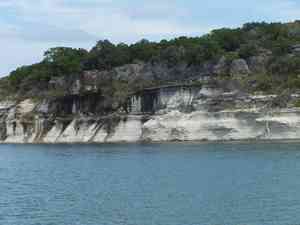
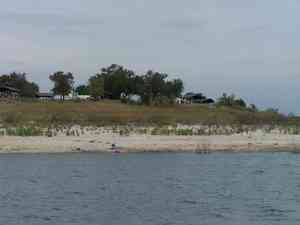
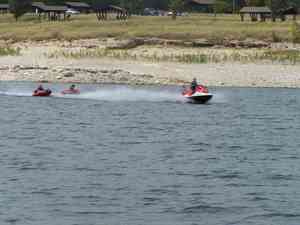
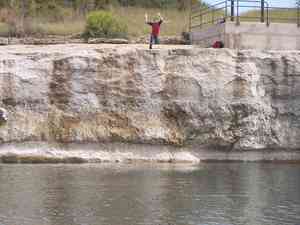
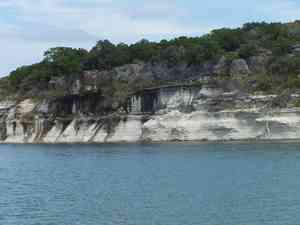
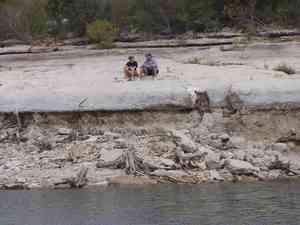
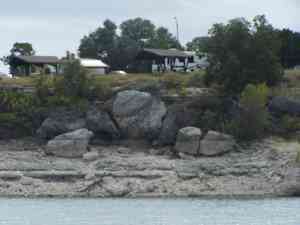
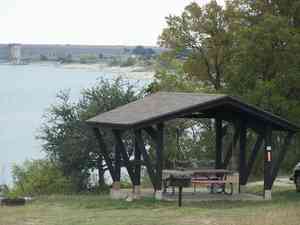
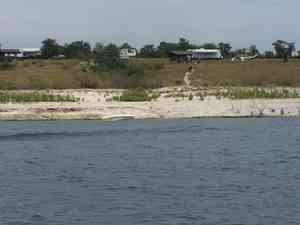
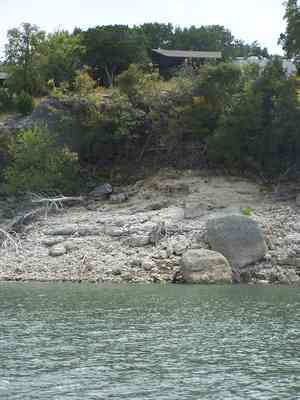
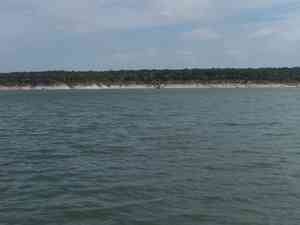
1 Review on “Georgetown”
This is our official Texas Outside rating